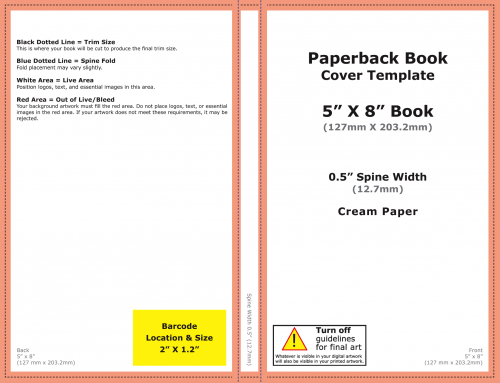I hate words.
Nothing complicates your ideas more than words. However, most writers love words. Go figure.
I don’t necessarily mean that an article’s word count is problematic. How many words it takes you to express and support your points is circumstantial. Just don’t get carried away with words that hinder, rather than enhance, your thoughts.
For example, the passive voice is often considered taboo. But I just used it anyway. In the exemplary first sentence of this paragraph “is often considered taboo” is the passive voice.
In this case I used the word “considered” to emphasize that it’s not the way something “is” but how it “is thought of/considered”. Here, the passive voice helped me explain what I wanted to say in more detail. I did not want to claim that the passive voice “is” actually taboo. I wanted to express that it is commonly considered taboo.
While there are instances where the passive voice is appropriate, the following is a case where the passive voice is unnecessary—adding excessive words to your text:
Above, I just wrote, “I used the word ‘considered.’”
The passive voice-version of this phrase states, “I was using the word ‘considered.’”
There’s no difference in meaning in these two sentences—neither makes my point more clear—but the later has one extra word.
Here is another example from my own writing that illustrates the insertion of useless words:
I wrote, “I wanted to express that it is commonly considered taboo.”
The first draft of this sentence may have read, “I wanted to express that it is commonly considered to be taboo.”
Two extra words. No additional description.
Unwarranted words throughout your text convolute your sentence structure without adding any value to your writing.
Do you know what I hate more than words, “wordy” grammar phrases like “passive voice”? (Since phrases are compound words, I guess this gripe relates to my first complaint.)
The advice “avoid the passive voice” is a little vague, so let me break it down for you.
The passive voice consists of multiple verbs.
Combining verbs to form the passive voice describe the process of an action. The past tense of a verb describes an action that happened. The present tense of a verb describes the action as it happens.
When editing your text, your verb tense should be consistent.
- Examine your content to see if you switch to the passive voice.
- If so, decide if you need to emphasize the action or the process of the action.
- If you use the passive voice in a sentence where describing the process of an action is no more descriptive than the action itself, get rid of the superfluous verb.
- The passive voice may be changed to past or present tense.
Here are two more examples of a redundant passive voice.
Passive Voice (Present Tense): Jerry walks into the concert hall where Sally is singing.
Present Tense: Jerry walks into the concert hall where Sally sings.
Passive Voice (Past Tense): Jerry walked behind the stage at the concert hall where Sally was taking a break from singing.
Past Tense: Jerry walked behind the stage at the concert hall where Sally took a break from singing.
I shouldn’t have such negative feelings towards words. Sometimes they just need to be put in their place.
Get an Editorial Review | Get Amazon Sales & Reviews | Get Edited | Publish Your Book | Enter the SPR Book Awards | Other Marketing Services






















Your final two examples illustrate differences of aspect, not voice. All four sentences are in the active voice; the two you have identified as passive are actually using progressive rather than simple aspect. Likewise your earlier example: “I was using the word ‘considered.’”
Passive voice is a lot more than just “multiple verbs”!
I’m no grammarian – in fact, it was one of my worst subjects in middle school AND high school (diagram a sentence? Oh, GOD) – so I can’t offer any technical words or definitions that will make any sense, but here’s what I get from the examples in the post, which I interpret as communicating very different ideas depending on how they’re written:
Passive Voice (Present Tense): Jerry walks into the concert hall where Sally is singing. (This says to me she is currently singing – as he walks in. He’s interrupting her singing.)
Present Tense: Jerry walks into the concert hall where Sally sings. (This says, without further context, that this is a place where Sally is known to sing. It doesn’t necessarily mean she’s singing right now.)
Passive Voice (Past Tense): Jerry walked behind the stage at the concert hall where Sally was taking a break from singing. (Sally is taking a break as Jerry appears behind the stage. He’s interrupting her break.)
Past Tense: Jerry walked behind the stage at the concert hall where Sally took a break from singing. (This says to me that Sally, upon seeing Jerry, decided to take a break from singing.)
I’m a huge passive-voice offender, and I’m glad I read your piece because I’m (right now) printing my first draft of a novel I just finished, and I’m now reminded to look for such things (among all the other problems I’m likely to find). So, thank you.